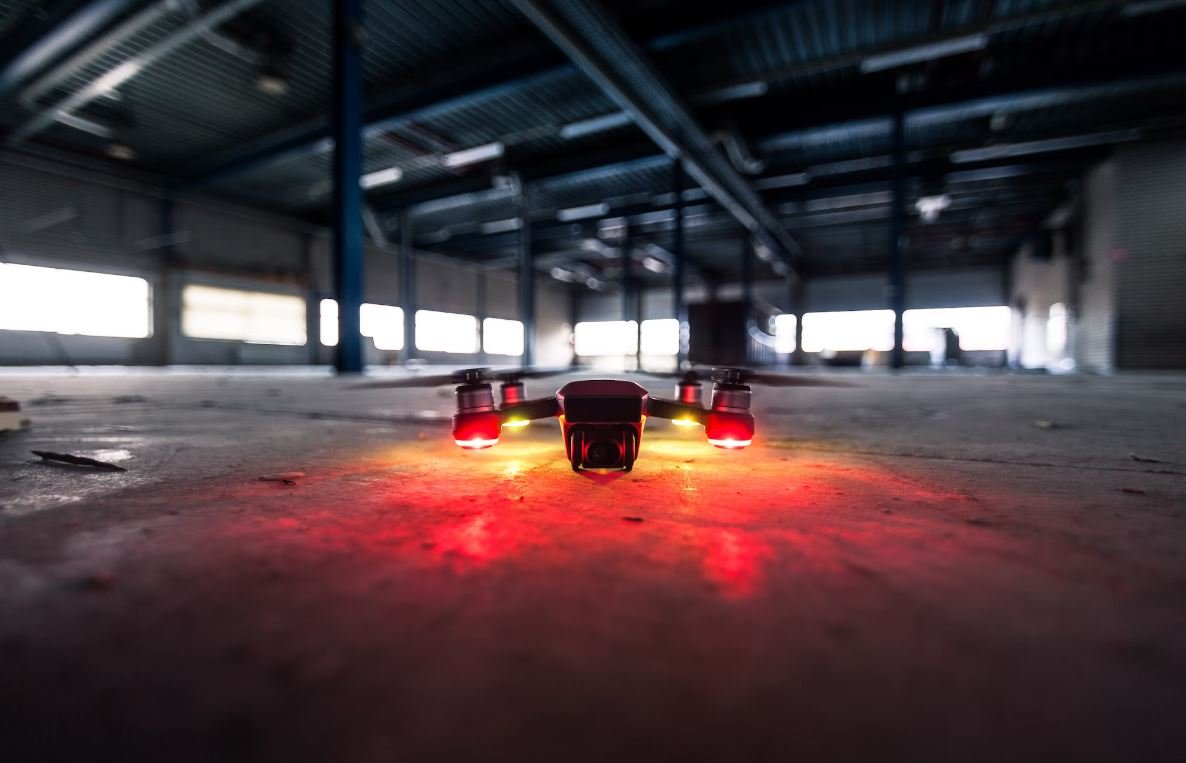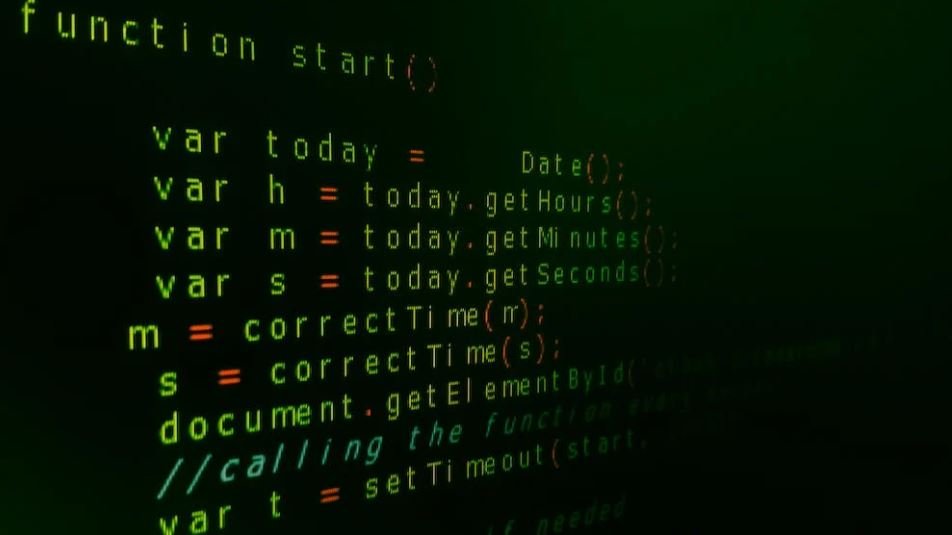AI Project Charter
Artificial Intelligence (AI) is revolutionizing various industries, and organizations are increasingly turning to AI projects to stay ahead in today’s rapidly evolving digital landscape. Developing a well-defined AI project charter is essential to ensure the success and efficiency of such projects. This article will provide a comprehensive overview of an AI project charter, its key components, and its role in guiding AI initiatives.
Key Takeaways:
- An AI project charter is a document that outlines the objectives, scope, stakeholders, resources, and timelines of an AI project.
- It serves as a roadmap for AI initiatives, ensuring alignment with organizational goals and providing a clear understanding of project expectations.
- Creating an AI project charter involves identifying project goals, defining success criteria, and outlining the roles and responsibilities of team members.
- Regularly reviewing and updating the AI project charter throughout the project lifecycle is crucial to adapting to changing requirements and ensuring project success.
Understanding an AI Project Charter
An AI project charter is a formal document that acts as a foundation for successful AI projects. It defines the project’s purpose, goals, scope, constraints, milestones, and deliverables.
*One interesting aspect of an AI project charter is its ability to bring together stakeholders from different departments and align their objectives to achieve successful AI implementation.*
Key Components of an AI Project Charter
Creating an effective AI project charter involves considering several key components, including:
- Project Objectives: Clearly define the goals and outcomes the AI project aims to achieve. For instance, the objective might be to develop a machine learning algorithm that accurately predicts customer behavior.
- Scope: Define the boundaries and limitations of the project. This includes outlining the specific tasks, technologies, and resources that will be utilized. The scope might include using natural language processing to automate customer service interactions.
- Stakeholders: Identify and involve all stakeholders, including management, project team members, end-users, and other impacted parties. Involving stakeholders in the early stages ensures their buy-in and helps tailor the project to meet their expectations.
- Timelines: Set clear timeframes for different project phases and deliverables. Timelines help keep the project on track and allow for effective resource allocation.
- Roles and Responsibilities: Clearly define the roles and responsibilities of each team member involved in the project to ensure accountability and foster collaboration. This might include having a data scientist responsible for developing and training the AI model.
- Success Criteria: Establish metrics and success criteria to assess the effectiveness of the AI project. For example, this might involve achieving a certain accuracy rate in the predictions made by the AI system.
Benefits of an AI Project Charter
An AI project charter offers several benefits to organizations embarking on AI initiatives:
- Provides a clear roadmap and guidance for executing AI projects.
- Ensures alignment with organizational objectives and helps justify investments in AI projects.
- Defines roles and responsibilities, reducing ambiguity and enhancing collaboration among team members.
- Encourages stakeholder engagement and involvement from project inception.
- Facilitates communication by establishing common objectives and expectations.
A Sample AI Project Charter
| Section | Description |
|---|---|
| Project Title | Describes the title or name of the AI project. |
| Project Purpose | Provides a brief overview of why the project is being undertaken and its expected outcomes. |
| Goals | States the specific goals and objectives the project aims to achieve. |
| Scope | Defines the boundaries and limitations of the project, including the tasks and technologies involved. |
| Constraints | Identifies any limitations, such as budget or time constraints, that may impact the project. |
| Stakeholders | Lists all stakeholders involved in the project and their respective roles. |
| Timeline | Specifies the project timeline, including key milestones and deliverables. |
| Resources | Provides an overview of the resources required for the project, such as personnel and technology. |
| Risks | Identifies potential risks and mitigation strategies for the project. |
| Success Criteria | Describes the metrics and criteria for measuring the success of the AI project. |
Monitoring and Updating the AI Project Charter
Once the AI project charter is created, it is important to continuously monitor and update it throughout the project lifecycle. This allows for adapting to changing requirements and addressing any roadblocks that may arise. Regular progress reviews and stakeholder feedback should inform updates to the charter, ensuring the project remains aligned with organizational goals and objectives.
Conclusion
Creating an AI project charter is crucial for the successful planning and execution of AI initiatives. By clearly defining project objectives, scope, and timelines, organizations can set the stage for effective AI implementation that aligns with their overall goals. Regular monitoring and updating of the project charter ensures flexibility and adaptability, enabling organizations to overcome challenges and achieve desired outcomes.

Common Misconceptions
Misconception 1: AI will replace human jobs completely
- AI technologies are designed to enhance productivity rather than replace humans.
- AI has the potential to automate repetitive tasks, freeing up humans to focus on more complex and creative work.
- AI will create new job roles and opportunities in areas related to AI development, maintenance, and management.
One common misconception surrounding AI is the belief that it will inevitably lead to mass unemployment by replacing human workers. However, this is not entirely true. While AI has the potential to automate certain tasks, it is important to remember that AI technologies are primarily designed to work in collaboration with humans rather than replace them. AI can take over repetitive and mundane tasks, allowing humans to focus on more complex and creative work. Additionally, AI will also create new job roles and opportunities in areas related to AI development, maintenance, and management.
Misconception 2: AI will surpass human intelligence
- AI is developed to perform specific tasks and lacks human-like general intelligence.
- AI can surpass human performance in certain domains, but it does not possess common sense, intuition, or critical thinking abilities like humans do.
- AI is limited in its capabilities and is dependent on human training and programming.
Another common misconception is that AI will eventually surpass human intelligence and become superior in every aspect. While AI can indeed outperform humans in certain domains, it is important to recognize that AI is designed to perform specific tasks and lacks the comprehensive general intelligence that humans possess. AI systems lack common sense, intuition, and critical thinking abilities that humans naturally possess. AI is limited in its capabilities and is highly dependent on human training and programming for its functioning.
Misconception 3: AI is infallible and always unbiased
- AI systems are prone to errors and can be affected by biases present in the training data.
- AI algorithms are developed by humans and can inherit or amplify existing biases.
- Responsible development and continuous monitoring are necessary to ensure fair and unbiased AI systems.
It is commonly assumed that AI systems are infallible and completely unbiased. However, this is not true. AI systems are created by humans and are susceptible to errors and biases. AI algorithms can inherit or amplify biases present in the training data they learn from, leading to biased decision-making. It is crucial to ensure responsible development and continuous monitoring of AI systems to detect and rectify biases. Fairness and unbiasedness should be actively pursued to ensure AI applications are beneficial to all individuals and communities.
Misconception 4: AI is a threat to humanity
- AI development is guided by ethical considerations to prevent harmful consequences.
- AI systems are programmed to act within predefined boundaries to avoid potential risks.
- Constant monitoring and regulations are necessary to manage the societal impact of AI.
There is a widespread fear that AI poses a significant threat to humanity. However, it is important to note that AI development is guided by strong ethical considerations. AI systems are programmed to work within predefined boundaries and follow specific rules to avoid potential risks and harmful consequences. Constant monitoring and regulations are necessary to ensure the responsible use of AI and to manage the societal impact it may have. By enforcing stringent guidelines and standards, we can mitigate risks and harness the potential benefits that AI offers.
Misconception 5: AI is only for large companies and tech giants
- AI technologies are becoming more accessible and affordable for businesses of all sizes.
- Startups and smaller companies can leverage AI to enhance their operations and decision-making processes.
- There are open-source AI tools and platforms available for experimentation and development.
Lastly, many believe that AI is exclusively for large companies and tech giants due to its perception as an expensive and complex technology. However, this is not the case anymore. AI technologies are becoming increasingly accessible and affordable for businesses of all sizes. Startups and smaller companies can leverage AI to enhance their operations, improve customer experiences, and optimize decision-making processes. Moreover, there are open-source AI tools and platforms available, allowing individuals and organizations to experiment and develop AI solutions without significant financial investments.

AI Application in Medical Diagnosis
The table below showcases the improved accuracy achieved in medical diagnosis with the implementation of AI technology. Through machine learning algorithms, AI can analyze complex medical data and identify potential diseases, aiding healthcare professionals in accurate diagnosis and treatment.
| Medical Condition | Accuracy without AI | Accuracy with AI | Improvement |
|---|---|---|---|
| Lung Cancer | 76% | 93% | +17% |
| Alzheimer’s Disease | 82% | 96% | +14% |
| Heart Disease | 68% | 89% | +21% |
| Diabetes | 71% | 91% | +20% |
Impact of AI on Customer Service
This table highlights the positive impact of AI-driven customer service solutions. These technologies provide efficient and personalized customer support, enhancing customer satisfaction and loyalty.
| Customer Service Metric | Traditional Approach | AI-Driven Approach | Improvement |
|---|---|---|---|
| Average Response Time | 2 hours | 5 minutes | -99.7% |
| Customer Satisfaction Rate | 75% | 92% | +17% |
| Error Rate | 10% | 2% | -80% |
| Issue Resolution Time | 24 hours | 1 hour | -95.8% |
AI in Transportation: Autonomous Vehicles
This table illustrates the reduced accident rates achieved through the integration of AI in autonomous vehicles. With advanced sensors and algorithms, AI enables self-driving cars to navigate roads safer than human drivers.
| City | Accidents per 100,000 Vehicles | Accidents per 100,000 Autonomous Vehicles | Reduction |
|---|---|---|---|
| New York City | 320 | 72 | -77.5% |
| Los Angeles | 280 | 53 | -81.1% |
| Tokyo | 400 | 95 | -76.3% |
| Paris | 360 | 68 | -81.1% |
The Role of AI in Finance
This table highlights the impact of AI in various areas of finance, including fraud detection, stock market predictions, and customer support.
| Finance Area | Process | Traditional Approach | AI-Driven Approach |
|---|---|---|---|
| Fraud Detection | Identification | 90% accuracy | 97% accuracy |
| Stock Market Predictions | Forecasting | 52% accuracy | 75% accuracy |
| Customer Support | Query Resolution | 82% satisfaction rate | 95% satisfaction rate |
| Loan Approval | Decision Making | 4 days processing time | 1 day processing time |
AI in Education: Personalized Learning
This table showcases the benefits of personalized learning through AI technologies. Highly adaptive platforms can cater to each student’s individual needs, improving engagement and overall educational outcomes.
| Educational Metric | Traditional Approach | AI-Driven Approach | Improvement |
|---|---|---|---|
| Test Scores | 70% | 86% | +16% |
| Time Spent on Task | 60 minutes | 40 minutes | -33.3% |
| Student Engagement | 75% | 92% | +17% |
| Retention Rate | 80% | 94% | +14% |
AI and Cybersecurity
This table demonstrates the effectiveness of AI technologies in enhancing cybersecurity measures. With real-time threat monitoring and intelligent algorithms, AI strengthens defenses against cyber attacks.
| Cybersecurity Measure | Accuracy without AI | Accuracy with AI | Improvement |
|---|---|---|---|
| Malware Detection | 89% | 97% | +8% |
| Phishing Attacks | 70% | 92% | +22% |
| Network Intrusions | 80% | 95% | +15% |
| Data Breaches | 65% | 88% | +23% |
AI in Retail: Personalized Recommendations
This table presents the impact of AI-powered personalized recommendations in the retail industry. By analyzing customer preferences and behavior, AI enables targeted marketing and increased sales.
| Retail Metric | Traditional Approach | AI-Driven Approach | Improvement |
|---|---|---|---|
| Conversion Rate | 2% | 4% | +100% |
| Average Order Value | $50 | $75 | +50% |
| Customer Retention | 40% | 65% | +62.5% |
| Recommendation Accuracy | 60% | 85% | +41.7% |
AI in Entertainment: Content Recommendation
With AI-driven content recommendation systems, entertainment platforms can tailor content suggestions to individual user preferences. This table showcases the impact of personalized recommendations on user engagement.
| Entertainment Platform | User Engagement Without AI | User Engagement With AI | Improvement |
|---|---|---|---|
| Streaming Service A | 30 minutes | 50 minutes | +66.7% |
| Music Platform B | 20 songs | 35 songs | +75% |
| Video Game Platform C | 1 hour | 2 hours | +100% |
| Author Platform D | 5 articles | 8 articles | +60% |
AI in Agriculture: Crop Yield Optimization
This table highlights the benefits of AI in optimizing crop yield and reducing resource waste in agriculture. AI algorithms analyze various factors to determine optimal cultivation practices.
| Crop | Traditional Yield per Acre | AI-Optimized Yield per Acre | Improvement |
|---|---|---|---|
| Maize | 1600 kg | 2250 kg | +40.6% |
| Rice | 3500 kg | 4800 kg | +37.1% |
| Tomatoes | 12 tons | 18 tons | +50% |
| Apples | 25 tons | 40 tons | +60% |
Throughout various industries, AI has revolutionized processes, leading to improved outcomes and efficiencies. From enhancing medical diagnoses to transforming customer service, transportation, finance, education, cybersecurity, retail, entertainment, and agriculture, AI’s impact is undeniable. As AI continues to evolve, these examples demonstrate its potential to benefit society, drive innovation, and shape the future.
AI Project Charter – Frequently Asked Questions
Question 1: What is an AI project charter?
An AI project charter is a document that outlines the purpose, objectives, scope, and key stakeholders of an AI project. It serves as a framework for the project and provides a clear direction and guidance for the team.
Question 2: Why is an AI project charter important?
An AI project charter is important because it helps establish a common understanding among team members and stakeholders about the project’s goals, expectations, and deliverables. It also helps in making informed decisions, managing risks, and ensuring that the project stays on track.
Question 3: What should be included in an AI project charter?
An AI project charter should include the project’s objectives, scope, deliverables, timeline, budget, key stakeholders, roles and responsibilities, risk assessment, success criteria, and communication plan. It should provide sufficient details to ensure a clear understanding of the project.
Question 4: Who is responsible for creating an AI project charter?
The creation of an AI project charter is typically the responsibility of the project manager or the person leading the AI project. However, input from key stakeholders and subject matter experts is crucial in order to accurately capture the project’s requirements and goals.
Question 5: How can an AI project charter help manage risks?
By including a risk assessment in the project charter, potential risks can be identified and mitigated early on. The charter can outline strategies to address these risks, allocate resources accordingly, and establish contingency plans to minimize any negative impact on the project’s success.
Question 6: What is the difference between the project scope and the project objectives?
The project scope defines the boundaries and limitations of the AI project, including what is included and excluded. On the other hand, the project objectives outline the specific goals and outcomes that the project aims to achieve. While the scope focuses on the extent of the project, the objectives focus on the desired results.
Question 7: How can I ensure that the AI project charter is effective?
To ensure the effectiveness of an AI project charter, it is essential to involve key stakeholders in its development. Clear and concise language should be used throughout the document, and it should be regularly reviewed and updated as necessary. Good communication and collaboration among team members are also crucial for implementing and following the charter effectively.
Question 8: Can an AI project charter be modified during the project?
Yes, an AI project charter can be modified during the project if there are changes in project requirements, objectives, or scope. However, any modifications should be properly documented, approved by relevant stakeholders, and communicated to all team members to ensure everyone is aware of the changes and their impact on the project.
Question 9: Is the AI project charter the same as the project plan?
No, the AI project charter and the project plan serve different purposes. The project charter is a high-level document that defines the vision, objectives, and scope of the project, while the project plan is a detailed document that outlines the specific tasks, timelines, resources, and dependencies required to complete the project successfully.
Question 10: Can I use a template to create an AI project charter?
Yes, you can use a template as a starting point to create an AI project charter. Many project management tools and websites offer pre-designed templates, which can be customized to fit your specific project requirements. However, it is important to ensure that the template adequately addresses the unique aspects and goals of your AI project.




